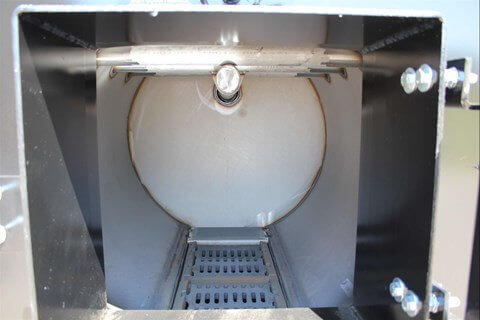Saving money and reducing air pollutions can be easy if you know the Do’s and Don’ts.
Burn the Right Wood
Burn only dry seasoned firewood. Burning green, wet wood will result in low temperatures and will be difficult to ignite. Burning wet wood consumes energy that would normally be used to efficiently complete the combustion process. Properly seasoned wood will ignite easily and burn efficiently. Properly seasoned wood will have a moisture content of less than 20%. Firewood with 20% or less moisture content will burn hotter which cuts fuel consumption and reduces smoke from your outdoor wood furnace.
Ways to Tell if Your Firewood is Dry Enough to Burn:
Firewood Types
Wood can be classified as softwood or hardwood. The pines, spruces and firs are common softwoods and the oaks, elms, birches, and maples are hardwoods. Hardwoods have long burn times because of their density. Softwoods are less dense and will burn hot and fast giving you shorter burn times. Hardwoods are the most desirable and are used by the majority of wood burners.
Use Kindling
When starting a fire use kindling and clean dry newspapers. Kindling should be placed in layers and in alternating directions. Do not start or fuel the fire with flammable materials including chemicals, gasoline, and naphtha or engine oil.
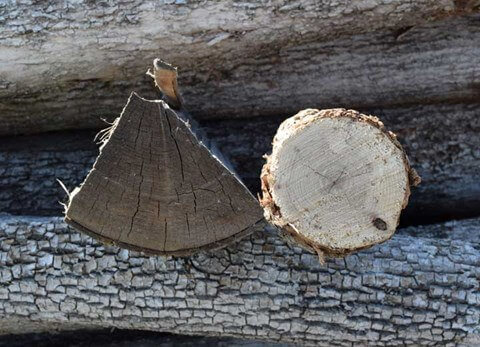
Seasoned wood (left) and wet wood (right).
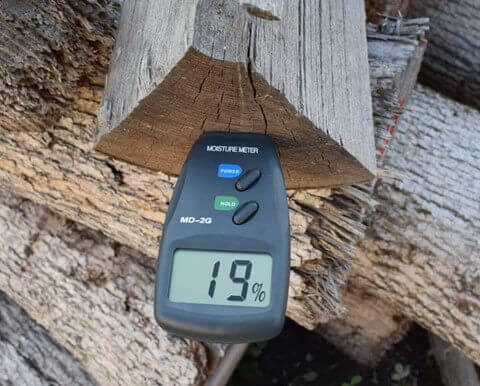
Moisture meters are a great way
to measure how dry firewood is.
The best way to ensure that your wood stays dry is to store it properly. Keeping firewood stacked and in a wood shed. Cover roof but leave the sides exposed, it’s important to allow air to move through it to help aid the drying process. Store wood off the ground. Always cut and split wood at the desired length. It should easily fit into your firebox. Split your wood before stacking it – Splitting the wood in advance of stacking it increases exposure to air, which improves drying time. Properly seasoned wood could take up to 12 months or more to dry.
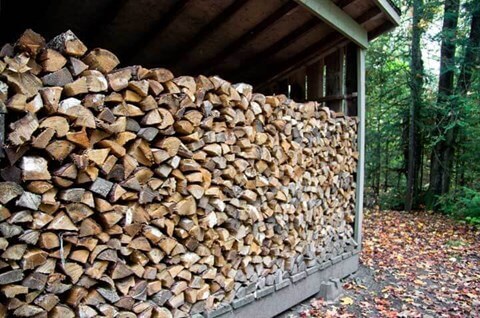
Inspect Chimney
Regular inspection and cleaning of chimney ensures a good draft and will prevent chimney fires.
Clean Regularly
Clean out ashes from stove and ash pan on a regular basis. Excess ashes will clog the air intake vents and reduce air supply which gives you incomplete combustion.
Chimney Extensions
When necessary, adding chimney extensions will ensure proper draft and smoke dispersal.
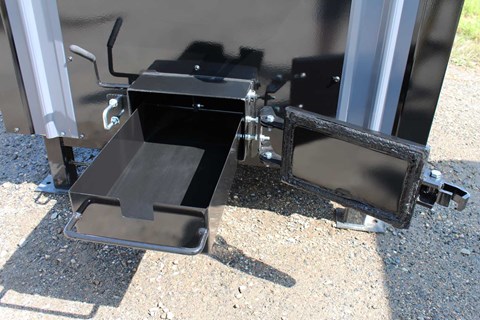
Do not burn household garbage, plastic or treated wood. Burning household garbage will release toxic chemicals that are harmful and potentially damage your stove and the environment. Don’t burn recyclables.
Don’t Burn List
Loading of Firebox
Its important to only load firebox with fuel to acheive deisired burn time based on outdoor temperatures. Do not overload firebox. Never allow fire smolder. A smoldering fire will create smoke and reduce efficiency as well as creosote build-up.
Stove Size
You should size your stove to provide sufficient heat without constant reloading. It’s important to not oversize or undersize your outdoor wood furnace. Choosing the appropriate size outdoor furnace will ensure that you’re operating at peak efficiency.
